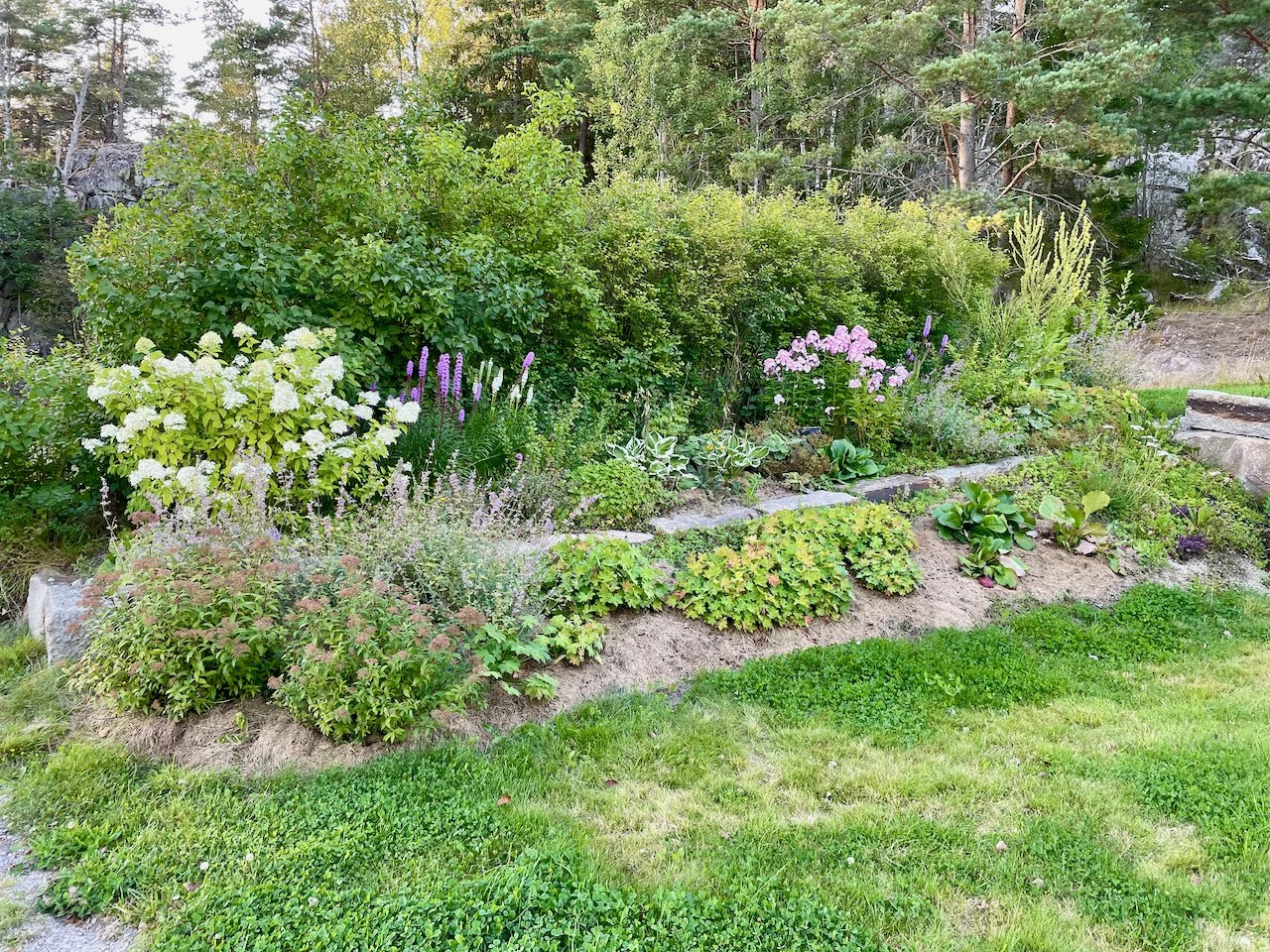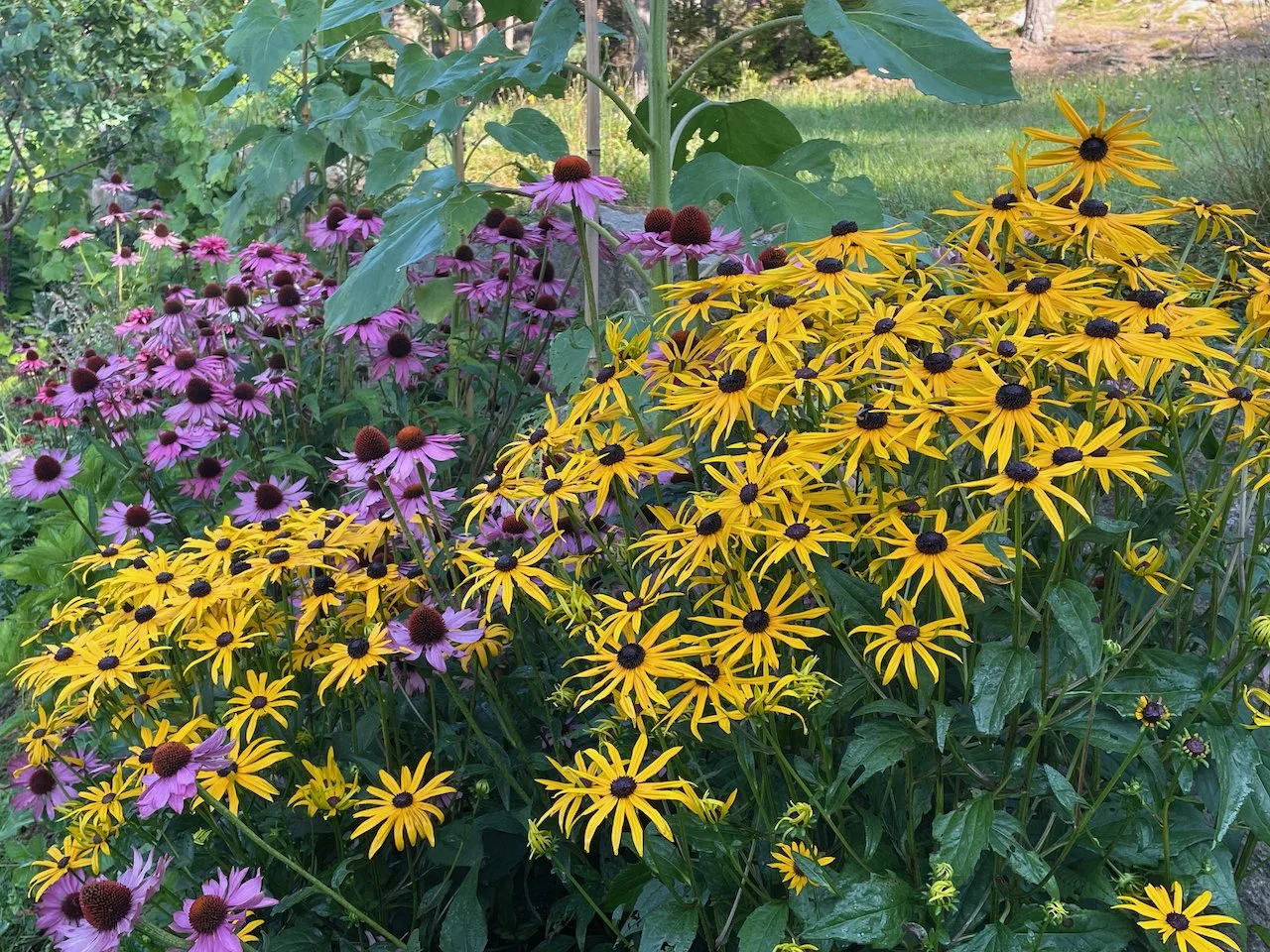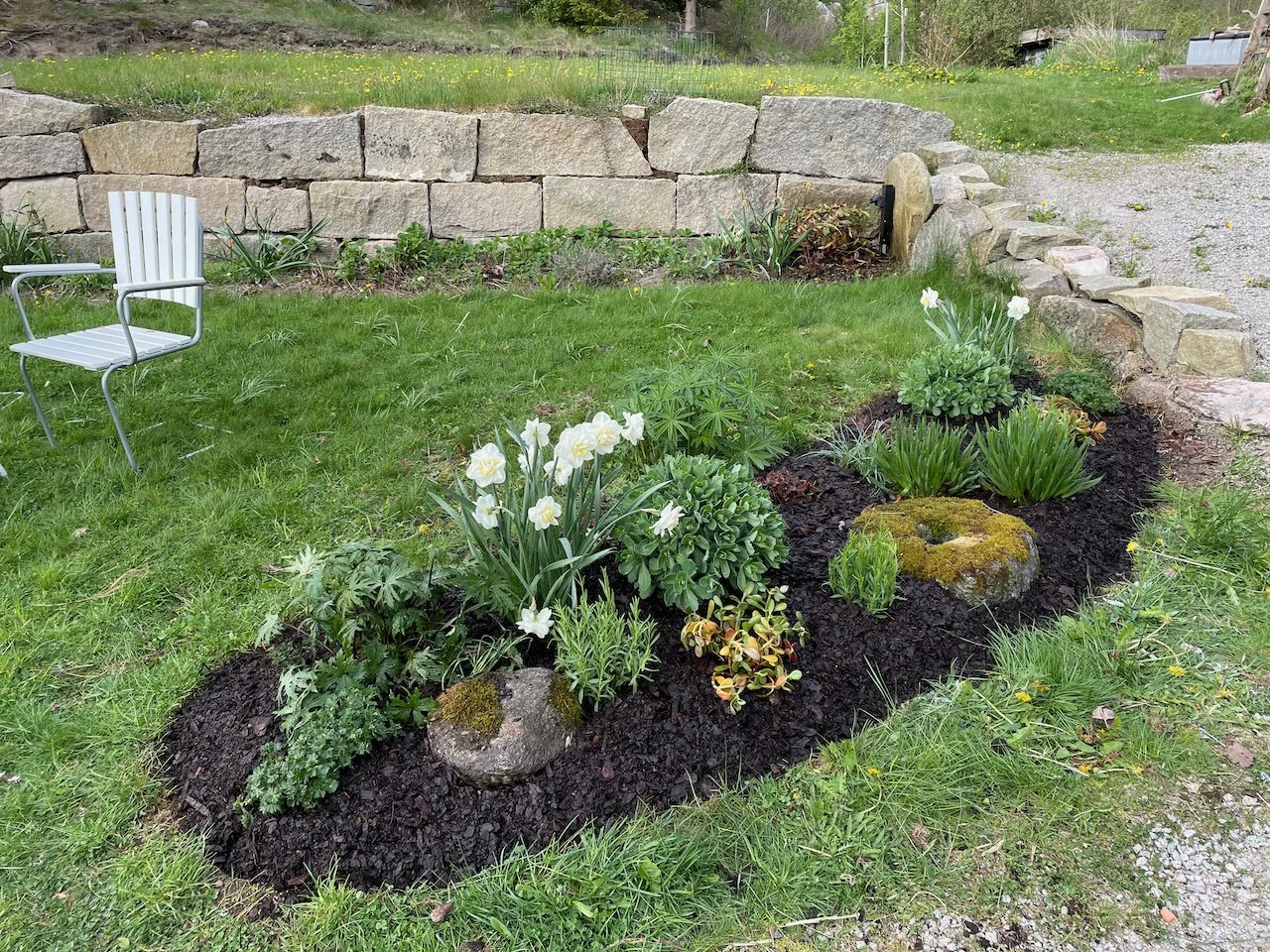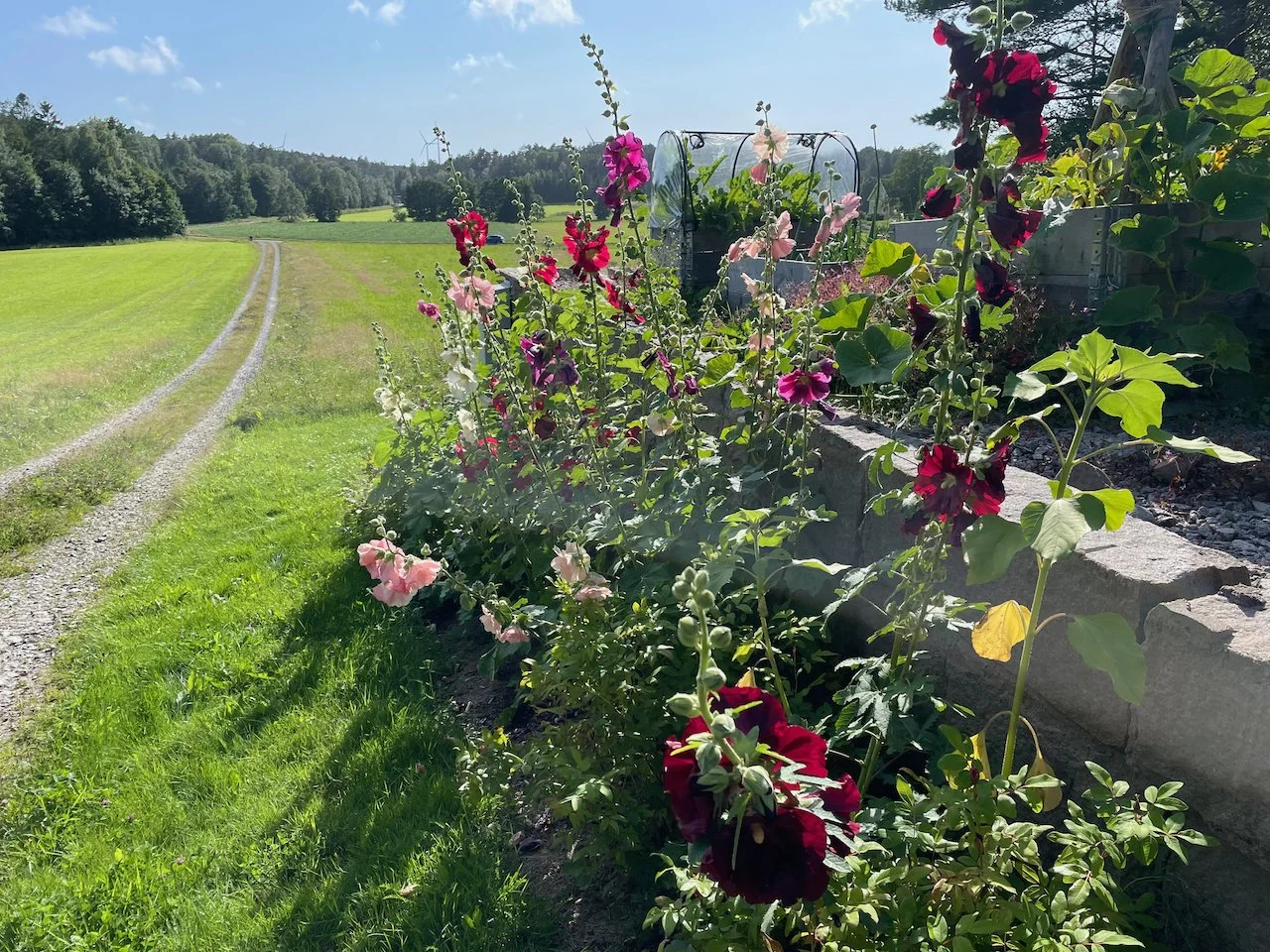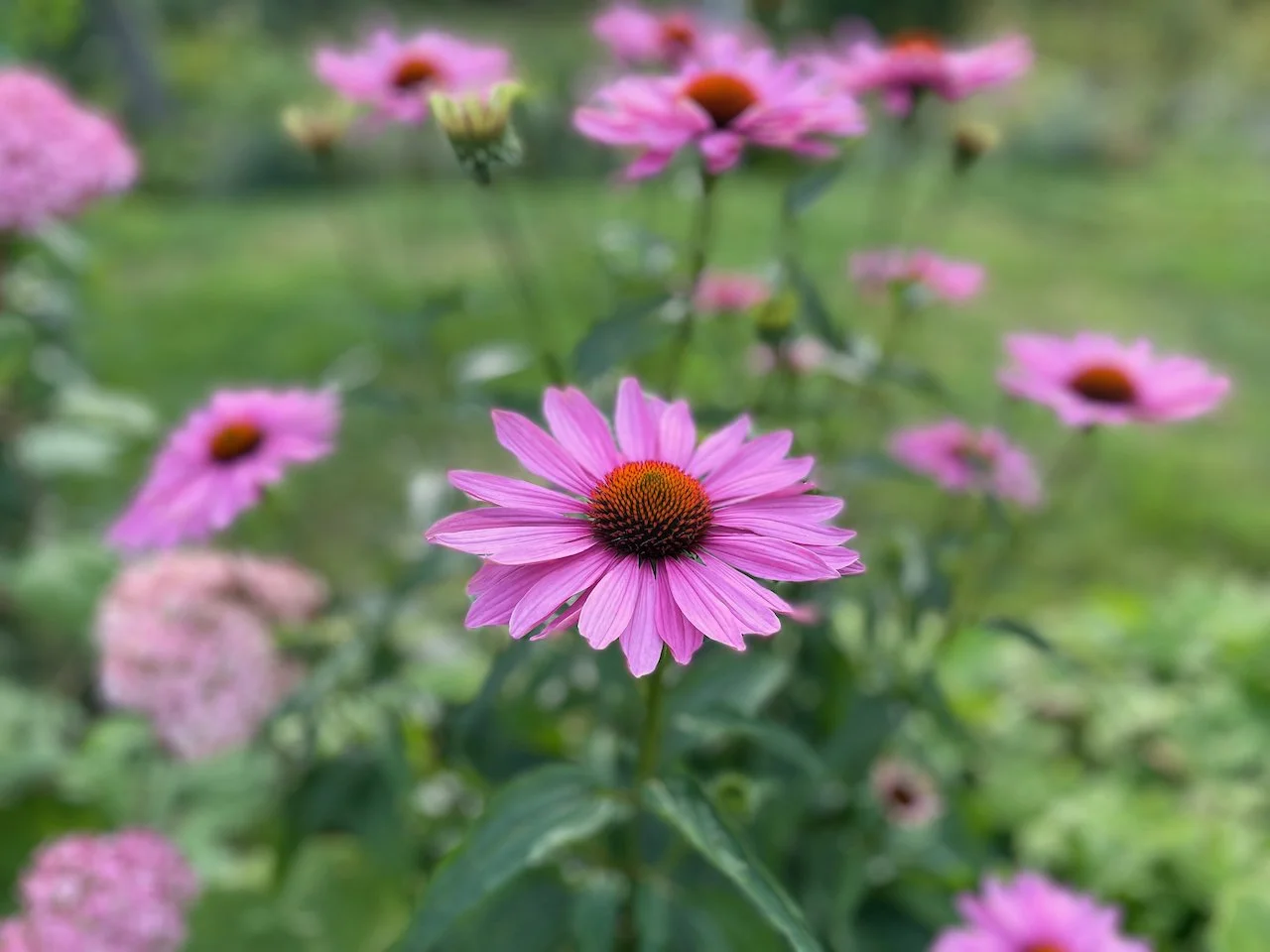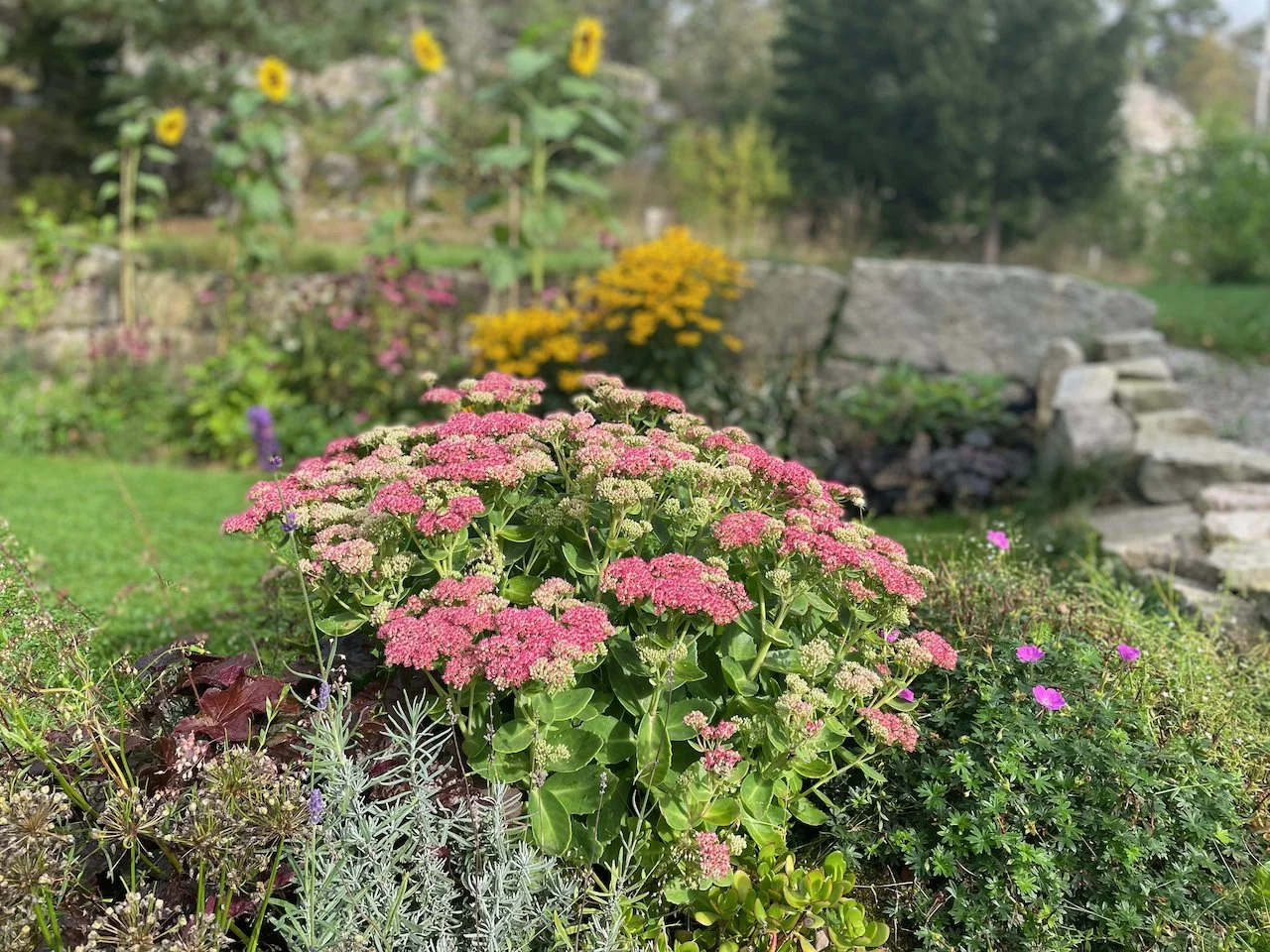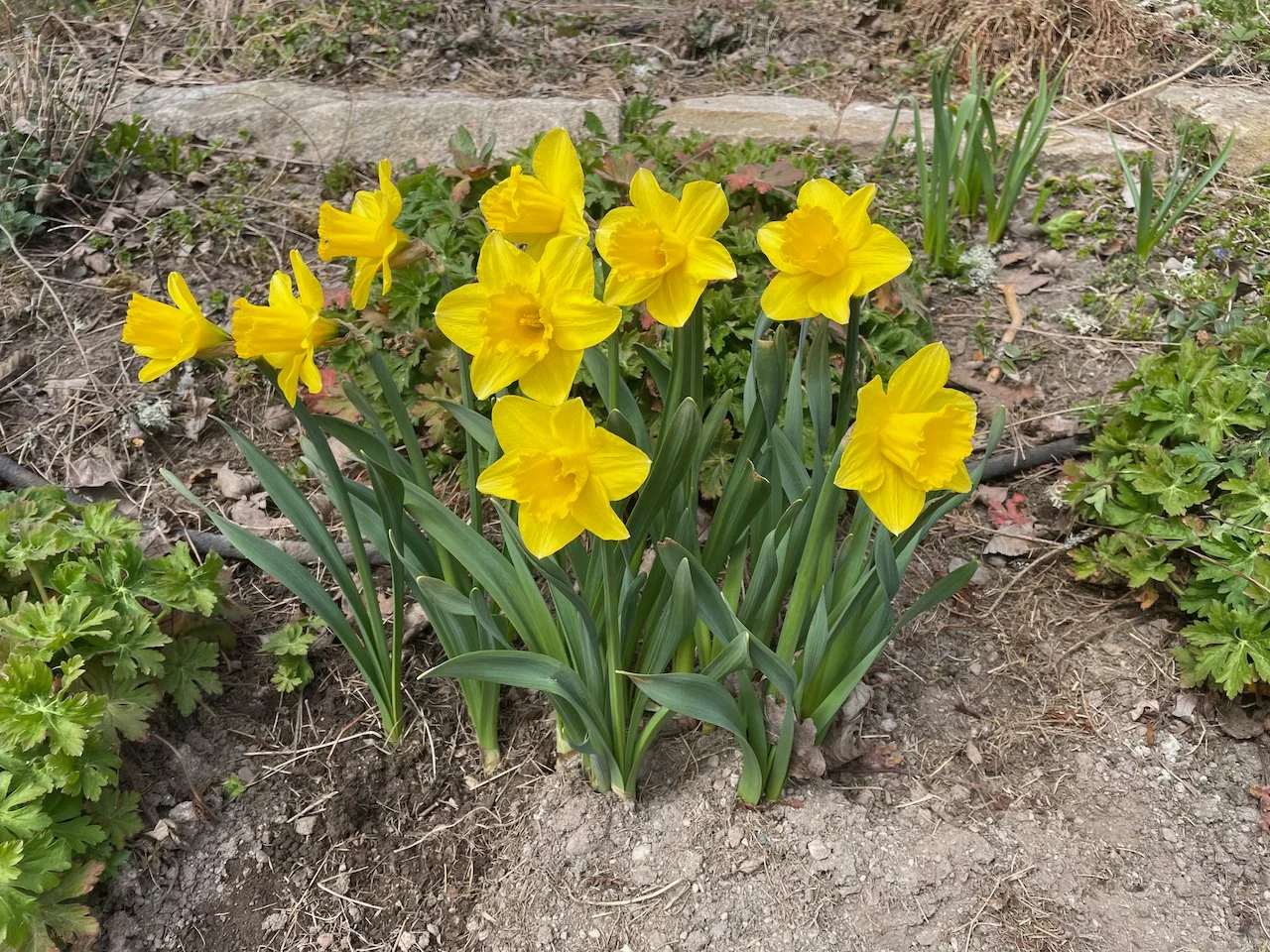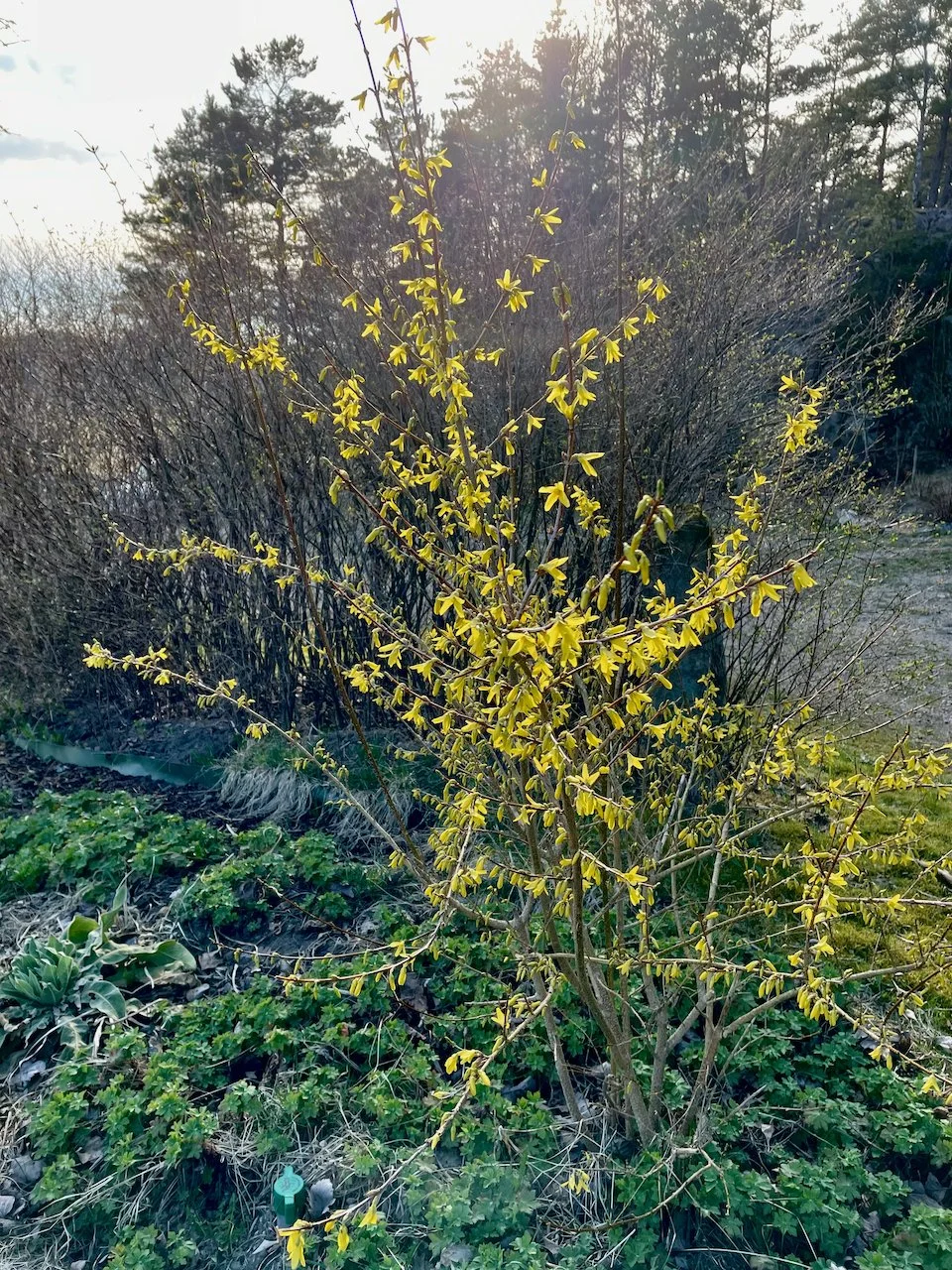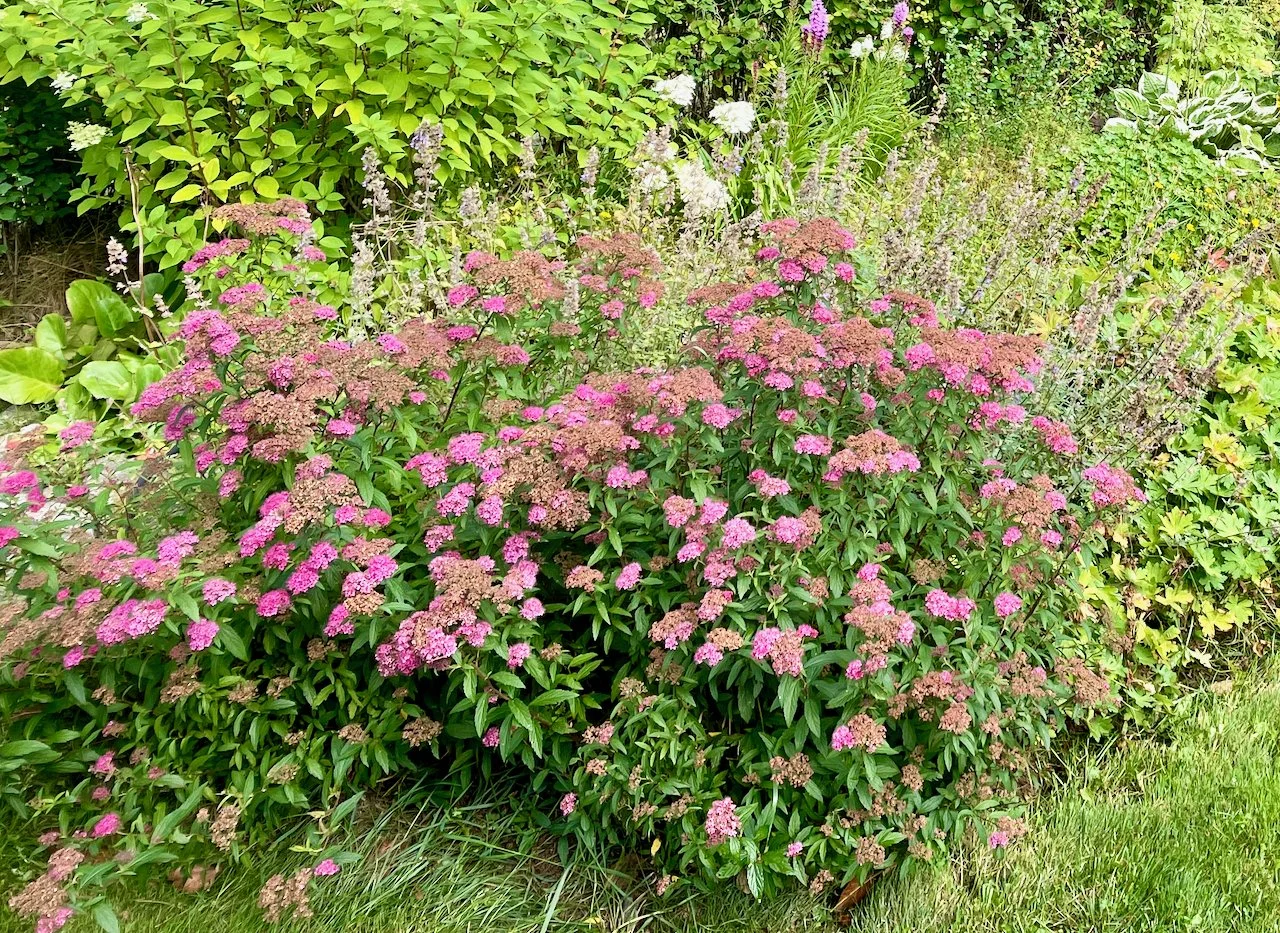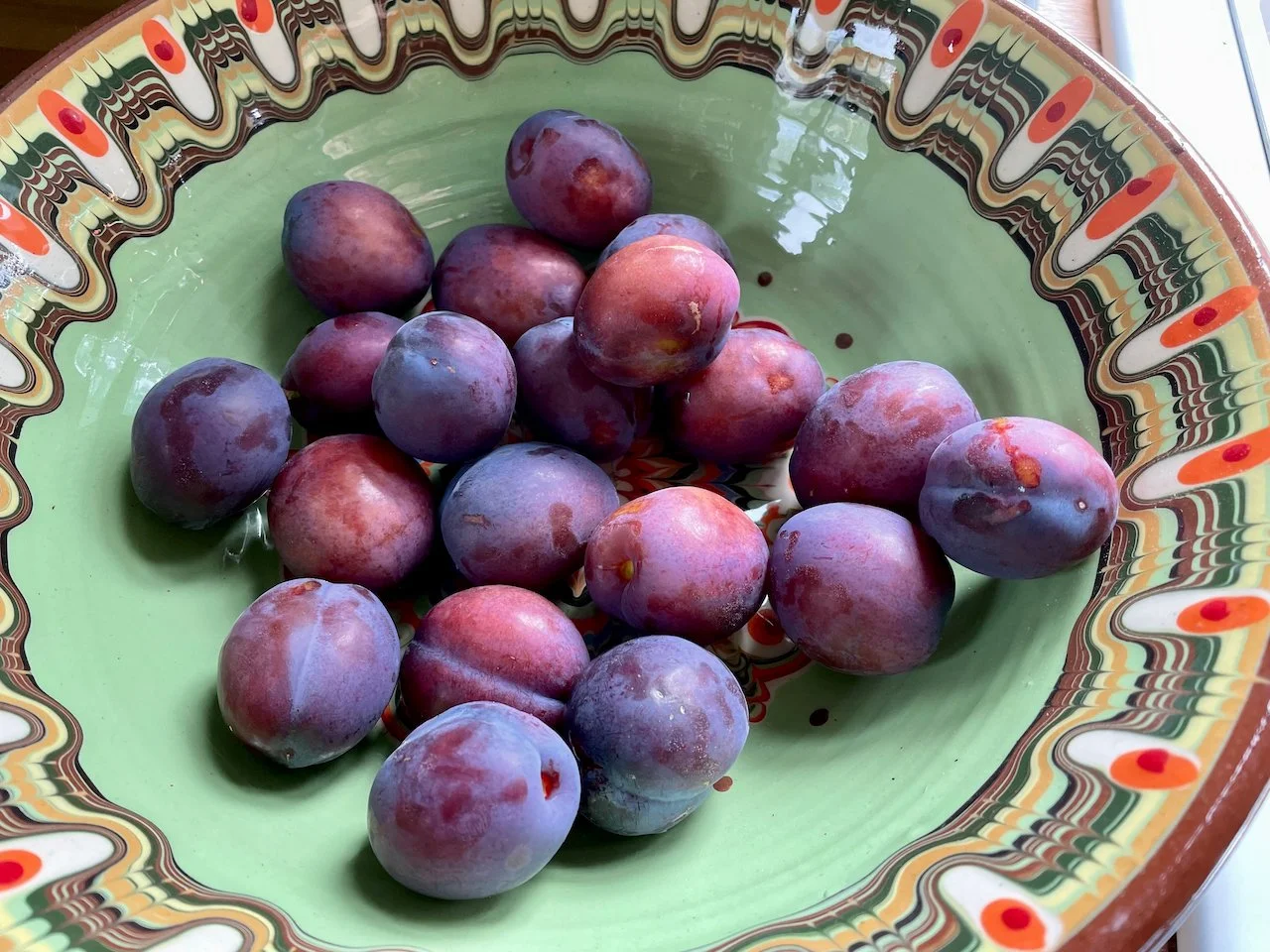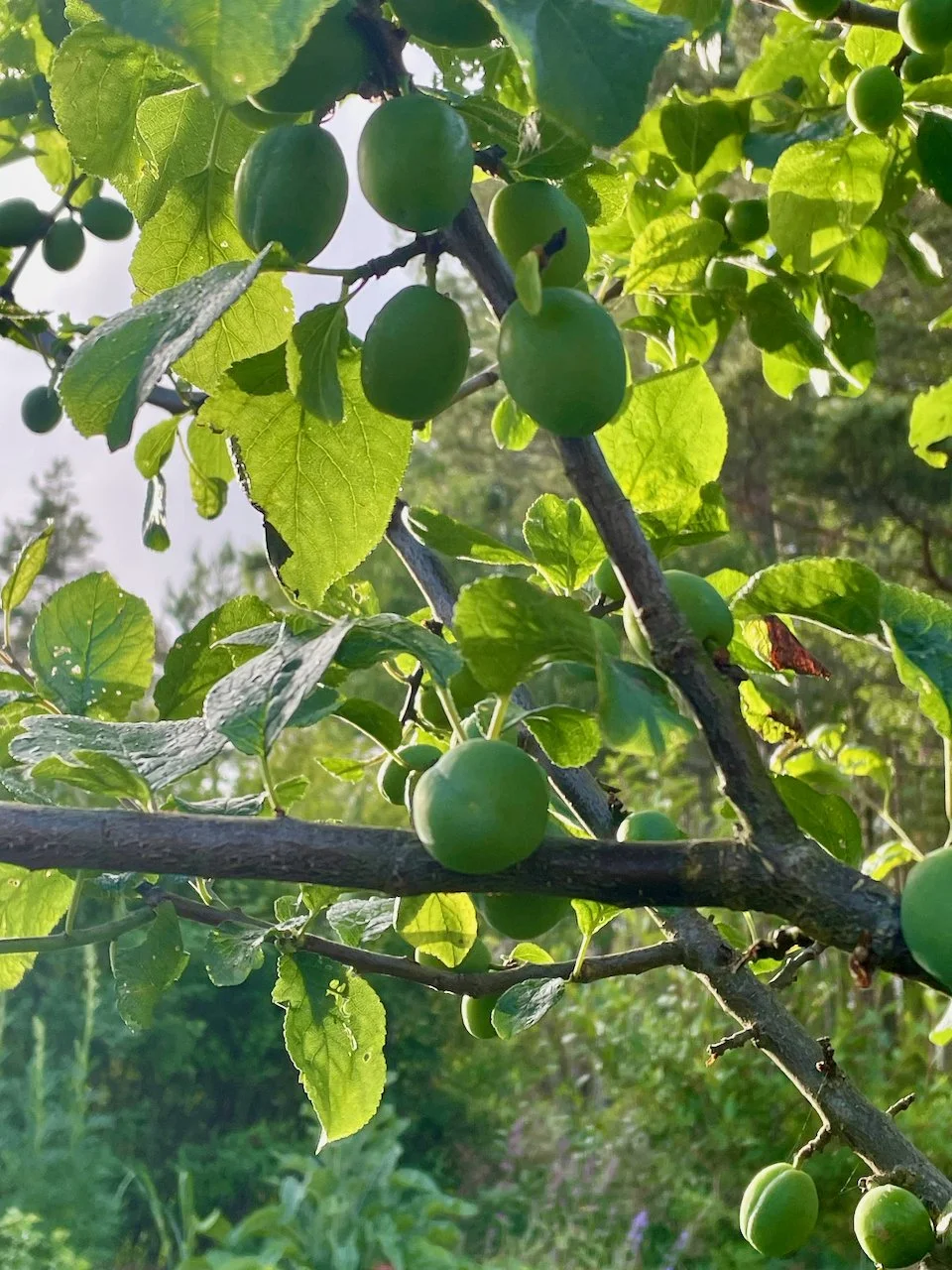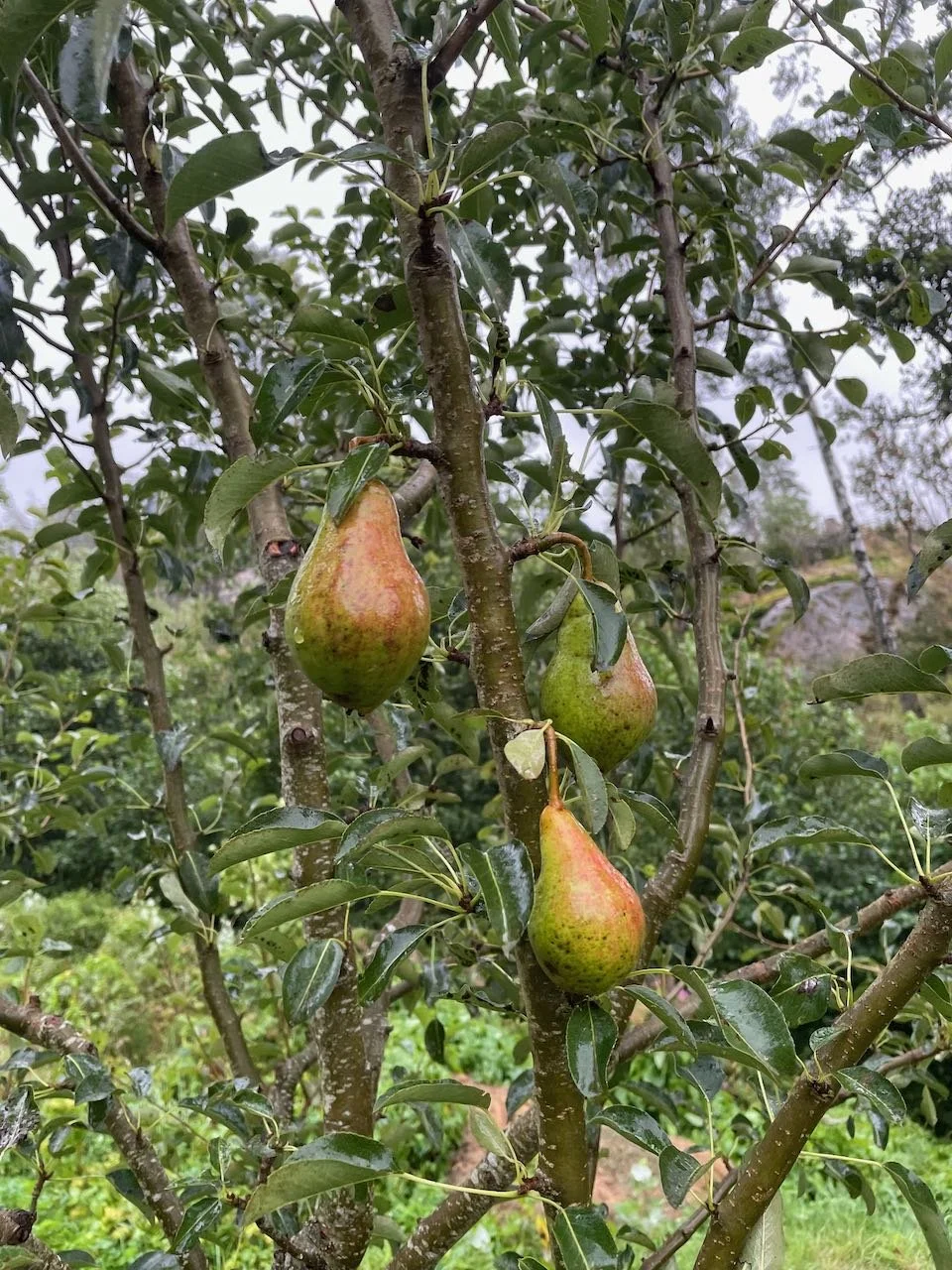Perennials
In our garden, we have exclusively chosen perennial plants for their ability to thrive in various garden styles and settings. Their versatility allows them to complement virtually any garden design, making them suitable for a wide range of gardening visions.
Particularly, we favor perennials with spreading habits, as they can gradually fill in spaces over time, creating a lush and low-maintenance ground cover. This quality has made them a popular choice in our garden, enhancing its aesthetics while requiring minimal upkeep.
Perennials also have the ability to continuously bloom and adapt to the seasons makes them a cherished choice for gardeners seeking long-lasting beauty and biodiversity.

My Favorite Perennials
Rose Coneflower
Echinacea purpurea 'Magnus.' Abundantly blooming perennial in the bed. Height about 100 cm. Numerous fragrant rose flowers on thin stems throughJuly - September. Sunny growing place. Well-drained and nutrient-rich soil. Good cut flower. Also beautiful after flowering.
Hosta
Hosta fortunei ‘Francee’ Shade-tolerant perennial with large leaves. Available in various leaf colors and sizes. Beautiful leafs and really nice flowers.
Cranesbills or Geranium
Geranium macrorrhizum ‘Ingwersen’s Variety’ and ‘Olympos.’ It is a ground cover plants. The low mat-forming cranesbill species are suitable for shady places in the garden. Flower color varies from pink to magenta. They grow best in humus-rich and moderately moist soils.
Upright Sedum or Stonecrop
Hylotelephium. It has a succulent green foliage and produces clusters of star-shaped flowers that bloom in fall. It’s easy to care for and beloved by pollinators
Phlox
Phlox paniculata 'Pin Eye Flame' PBR. Old-fashioned cottage plant. Pink flowers with white center, July-Aug. Easy-care and long-lived perennial, 60 cm. Sun to partial shade - thrives in well-drained nutrient-rich soil. Adding months of summer color.
Black-Eyed Susan
Rudbeckia Hirta. Blooms for a long time. Height about 60-90 cm. Abundant yellow flowers with a black center, July - September. Sunny growing place. Well-drained and nutrient-rich soil.
Shrubs and Bushes
By thoughtfully choosing your shrubs and bushes, you have the opportunity to craft a captivating and enduring garden. These plants not only contribute to the garden's charm but also serve the practical purpose of stabilizing and securing soil edges, making them especially valuable when designing gardens on slopes or inclines.
1. Potentilla Fruticosa (Shrubby Cinquefoil): This hardy shrub is an excellent choice for stabilizing soil due to its deep roots and low spreading growth habit. Potentilla's dainty, bright yellow flowers add a pop of color to your garden in late spring and throughout the summer, making it an attractive choice for erosion control.
2. Creeping Mallow (Malva Sylvestris): Creeping Mallow is known for its low-growing, spreading nature. It not only helps hold soil in place but also produces lovely purple or pink flowers that provide a delicate, cottage garden charm to your landscape.
3. Ground Cover Rose (Rosa spp.): Ground cover roses are exceptional for both soil stabilization and aesthetic appeal. They offer a carpet of beautiful blooms in various colors and typically have a spreading growth habit that covers bare ground effectively.
4. Cotoneaster: Cotoneasters are versatile shrubs that are well-suited to coastal climates. They feature small, glossy leaves and produce attractive red berries in the fall, adding visual interest to your garden while helping control erosion with their root systems.
5. Weeping Forsythia (Forsythia suspensa): Weeping Forsythia is a delightful addition to your garden, especially in the spring when its vibrant yellow flowers burst into bloom. This shrub's cascading growth habit lends an elegant touch, and it's well-known for its hardiness in various climates.
6. Spireas (Spiraea spp.): Spireas are renowned for their hardiness and their ability to thrive in coastal areas. They offer a wide range of colors, from pink to white, and typically bloom abundantly in the spring and summer, enhancing the garden's visual appeal.
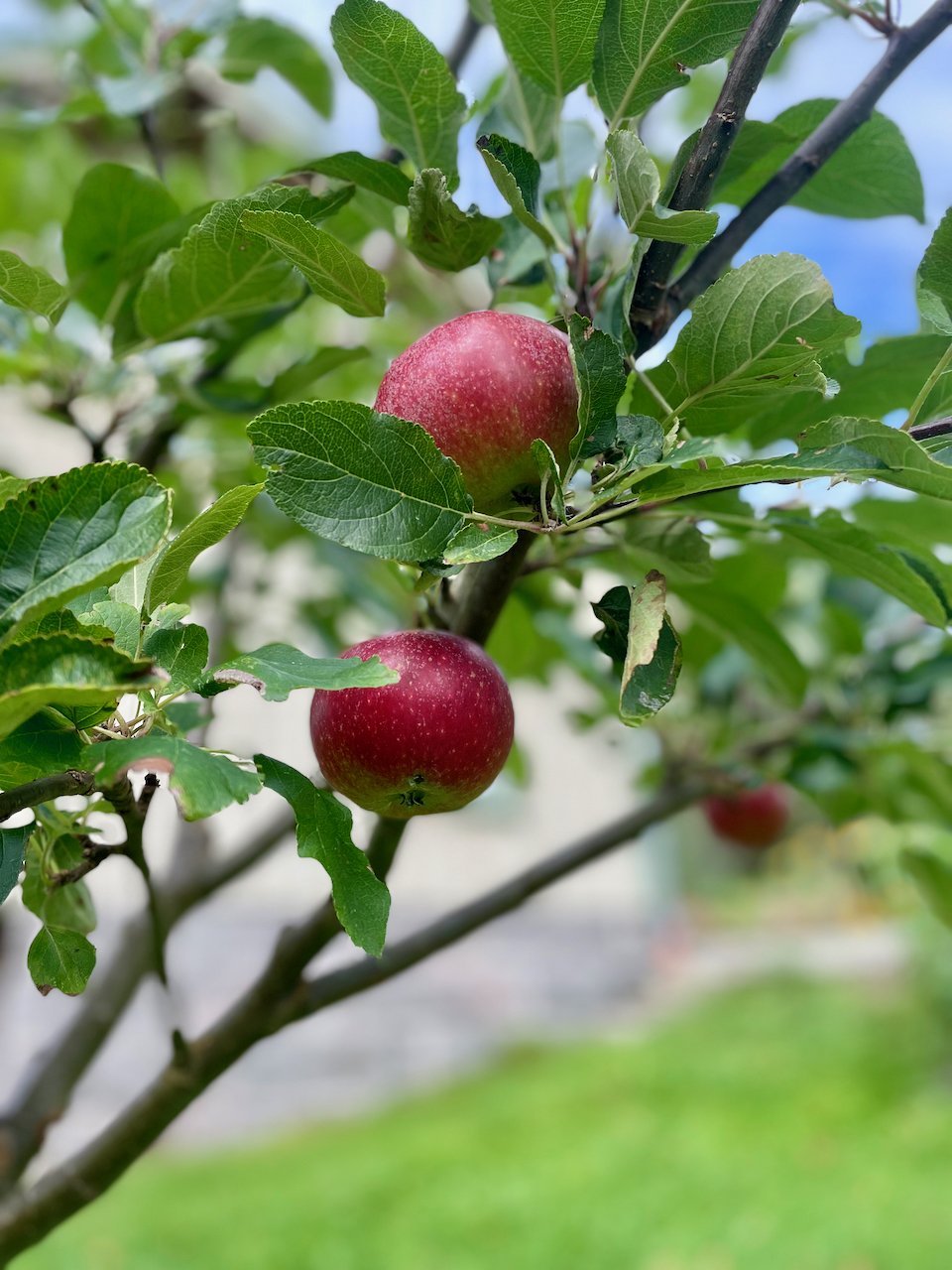
Fruit Trees
Fruit trees play a crucial role in a country house garden, and they need time before bearing fruit. In our garden design phase, we had to remove two apple trees that had been neglected over time. It felt important for us to replace them and expand the variety of fruit trees in our garden. Our aim was to not only reintroduce apple trees but also incorporate plum, cherry, and pear trees, all carefully selected to thrive within the specific hardiness zone of our region.
1. William’s Pear, also known as Bartlett Pear in the U.S: This is an English cultivar from the 1700’s. Today, grown all over the world. The William’s pear came to Sweden already in the 1850’s and is perfect for desserts and cooking. It is not a variety that will keep for storage, best enjoyed directly from the tree from mid-September. The fruits are green, yellow in color, rather big and sweet with a hint of cinnamon.
2. Pear tree: Göteborgs Diamant, an old variety that has been cultivated in Sweden since the 1800s. It grows tall and takes up space. It might take some years before bearing fruits, but then the yield will be abundant. Harvest season in September-October. The flesh is white, slightly grainy, and juicy. It has a sweet taste that works well in both desserts and cooking, and should be eaten directly when ripe.
3. Appel tree: Ingrid Marie is a Danish variety and was introduced in Sweden in 1946. It ripens late in Autumn, end of October early November and is good for storage. Rich red skin color and delicious aromatic taste, the flesh is yellow-white. Enjoyable both eaten and prepared in dishes. The growth is moderate and considered a winter apple in Sweden.
4. Appel tree: Katinka, a Norwegian cultivar introduced in 1992, is an early apple variety that ripens at the end of August or early September. It boasts excellent fruit quality and offers an aromatic taste of summer, with its yellow-white flesh. It is best enjoyed within September and is delicious when eaten straight from the tree.
5. Appel tree: Aroma is a Swedish cultivar, developed in 1947 and commercially introduced in 1973, typically ripens in September and can remain fresh for several months when stored properly. The tree is highly productive and yields fruits of exceptional quality, known for their aromatic taste. The flesh is crisp and can be used in desserts or enjoyed as a standalone snack.
6. Appel tree: Åkerö, an old Swedish apple variety dating back to the 1760s, with Dutch roots. This apple tree is known for its substantial size and the production of excellent apples. Today, it is cultivated throughout most of Scandinavia and the Nordic countries where the hardiness zone is suitable. Åkerö is a winter apple, cherished for its aromatic qualities, and is commonly used in baking and cooking.
7. Plum tree: Herman, a Swedish variety from the 1970s. It ripens early and has a dark blue-violet skin. The flesh is yellow and has a sweet-tart taste. Perfect for cooking, to can and preserve. Proper ripening is important for the flavor to develop, and it’s very good eaten directly from the tree.
